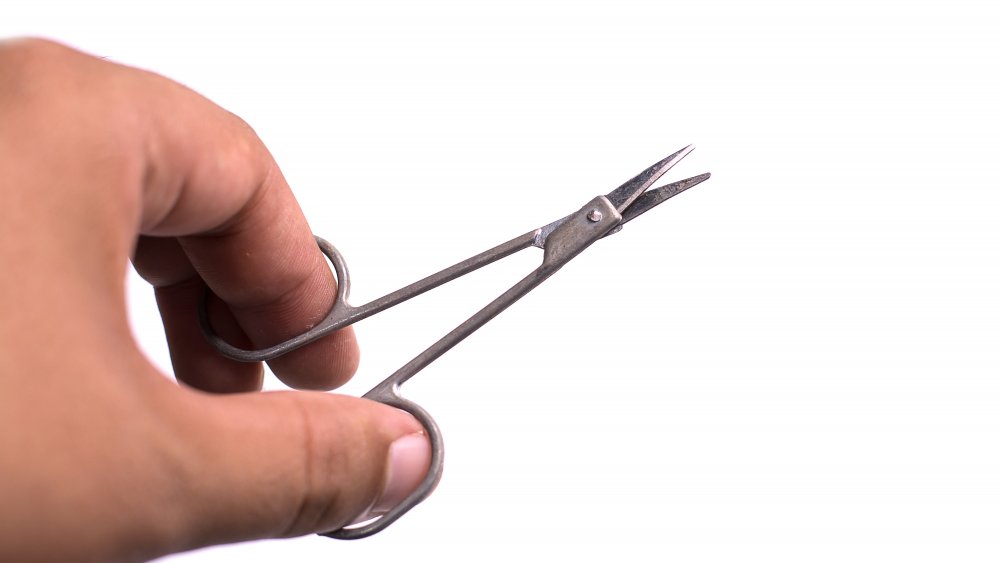Why Plucking Your Nose Hair Is Riskier Than You Think
Thick, full hair is amazing, right? Well, yes, unless it's in your nose. According to Cleveland Clinic, the average person grows 6 1/2 feet of nose hair from each follicle over a lifetime; and as we age, that hair gets coarser. While that's technically a good thing for our health, at some point most of us will want to do something about those strands if they start peeking out of our nostrils. Here's how to handle them safely.
First of all, nose hair deserves a little love. Both the larger, visible hairs as well as the ones too tiny to see (known as cilia) provide an important support to the immune system. They play a front-line role in keeping dust, germs, and debris from entering the body, thereby reducing exposure to allergens. A 2011 study divided 233 participants up according to the density of their nose hairs — no or less hair, moderate hair, or a lot of hair. Researchers found that those with the least amount of hair had a significantly greater rate of asthma, combined with seasonal allergies, than those with more hair (via Healthline). Nose hair also helps retain moisture in the air we breathe.
Even so, there are times we may want to remove some hair. There are safe and not-so-safe ways to do this.
Trimming tools are the safest way to go
The lowest-risk and cheapest way to remove unwanted hair is to use either tiny scissors designed for the purpose, or an electric nose-hair trimmer. This is not a permanent solution, but it is by far the safest, as well as the most painless.
Laser hair removal is a permanent treatment, but is controversial for nose hair since it can harm the mucous membranes inside the nasal cavity. It is the most costly and time-consuming option, and will remove hair on only the outer edge of the nose. Be sure to use only a board-certified dermatologist or plastic surgeon to do this sensitive work.
Waxing or plucking nose hair can actually be dangerous, and is discouraged by doctors. Not only are these methods painful, but because they remove the entire hair follicle, it leaves the sensitive nasal tissue susceptible to infection and swelling. Julie Russak, M.D., of Russak Dermatology Clinic in NYC, explains (via Women's Health), "As a result, you're very susceptible to allergy attacks, sinusitis, and respiratory infections. If a nasal infection were to travel upstream and enter the junction where other veins join, it could pose a serious health risk since it now presents a passage for bacteria directly into the brain."


